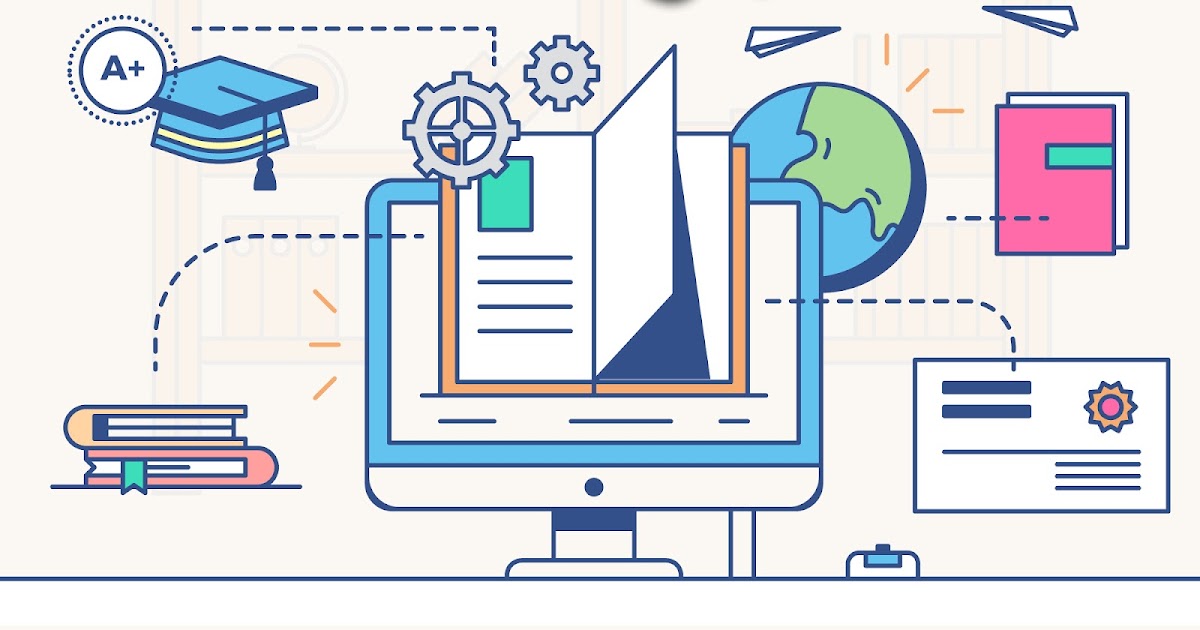EdTech Essentials: Tools Transforming Learning
The Digital Learning Landscape
Introduction to Educational Technology
Educational technology, or EdTech, is the dynamic intersection where traditional education meets innovation. It encapsulates a diverse range of tools and resources designed to enhance the learning experience through technology integration.
Impact on Traditional Learning Methods
The influx of EdTech has reshaped the landscape of traditional learning, challenging conventional methods. Students and educators alike now navigate a digital realm that promotes collaboration, engagement, and personalized learning experiences.
Platforms of the Future
Digital Learning Platforms Defined
Digital learning platforms are the backbone of EdTech, offering virtual spaces where education transcends physical boundaries. These platforms provide a myriad of tools, resources, and interactive features to facilitate effective learning.
Essential Features of Effective Platforms
Effective digital learning platforms boast features such as user-friendly interfaces, adaptive content delivery, and robust assessment tools. These elements converge to create an immersive and efficient learning environment.
Showcase of Popular Platforms
Exploring the landscape of EdTech platforms reveals a rich tapestry of options, from Learning Management Systems (LMS) like Canvas and Moodle to comprehensive platforms like Google Classroom, each with its unique strengths and applications.
Interactive Learning with Whiteboards
Fostering Classroom Collaboration
Interactive whiteboards redefine classroom dynamics by fostering collaboration. These digital canvases empower educators to create interactive lessons, encouraging student participation and teamwork.
Visual Learning Benefits
The visual learning benefits of interactive whiteboards are profound. Concepts come to life through multimedia elements, catering to diverse learning styles and enhancing the overall comprehension of subjects.
Implementing Interactive Whiteboards Successfully
Successful implementation involves training educators, integrating whiteboards seamlessly into lesson plans, and harnessing the full potential of interactive features to create an engaging and effective learning atmosphere.
The Gamification Revolution
Gamified Learning Experiences
Gamification injects an element of play into learning, turning lessons into engaging experiences. Points, rewards, and challenges transform education into a dynamic journey, making knowledge acquisition a thrilling adventure.
Motivational Aspects for Students
The motivational power of gamification cannot be overstated. By tapping into intrinsic motivators, students become active participants in their learning, fostering a sense of achievement and fueling a passion for knowledge.
Tools and Applications Transforming Education
An array of gamification tools, from Kahoot! for quizzes to Minecraft for interactive simulations, showcase the transformative impact of incorporating game elements into educational practices.
Immersive Education with VR

Creating Virtual Learning Environments
Virtual Reality (VR) transcends geographical constraints, creating immersive learning environments that transport students to different times and places. From exploring historical events to dissecting virtual organisms, the possibilities are endless.
Real-World Applications
The real-world applications of VR in education extend beyond simulations. Medical students can practice surgeries, history enthusiasts can witness historical events firsthand, and language learners can immerse themselves in authentic cultural experiences.
Challenges and Future Prospects of VR
Despite its potential, VR faces challenges such as accessibility and cost. However, as technology advances, VR is poised to become more accessible, revolutionizing the way students experience and interact with educational content.
Augmenting Reality in Education
Overlapping Digital Content with Reality
Augmented Reality (AR) overlays digital content onto the real world, creating an interactive and enriched learning experience. From interactive textbooks to museum exhibits, AR bridges the gap between the virtual and physical realms.
Integrating AR into Lesson Plans
Educators are integrating AR seamlessly into lesson plans, providing students with interactive content that enhances understanding. AR fosters curiosity, turning traditional lessons into captivating explorations.
Subject-Specific AR Tools
Subject-specific AR tools cater to diverse disciplines, from anatomy apps that enable students to explore the human body in 3D to chemistry applications that visualize molecular structures, making abstract concepts tangible.
Adaptive Learning Systems
Personalized Learning Paths
Adaptive learning systems customize educational journeys, tailoring content to individual needs and pacing. This personalized approach ensures that each student receives the support they need to succeed.
Tailoring Content to Individual Needs
Adaptive learning analyzes student performance, identifies strengths and weaknesses, and adapts content accordingly. This individualized approach fosters a deeper understanding of subjects and promotes long-term retention.
Success Stories in Education
Instances of success with adaptive learning abound, with students showcasing remarkable improvement in academic performance and educators attesting to the positive impact of tailored content on overall student engagement.
AI’s Role in Education
Intelligent Tutoring Systems
Artificial Intelligence (AI) takes on the role of an intelligent tutor, providing personalized assistance and feedback. These systems adapt to individual learning styles, creating a supportive learning environment.
Automated Grading and Feedback
AI streamlines the grading process, providing instantaneous feedback to students. This not only reduces the burden on educators but also enables students to identify and rectify mistakes promptly.
Ethical Considerations in AI Integration
As AI becomes more ingrained in education, ethical considerations arise. Striking a balance between the benefits of AI and safeguarding against potential biases is crucial to ensure a fair and inclusive learning environment.
Flipping the Classroom

Redefining Homework with Flipped Models
Flipping the classroom shifts the traditional homework paradigm. Students engage with instructional content at home through videos or online materials, allowing classroom time to be devoted to discussion, collaboration, and problem-solving.
Benefits for Student Engagement
Flipped models enhance student engagement by providing a more interactive and participatory classroom experience. This approach caters to diverse learning styles, promoting a deeper understanding of the material.
Tips for Implementation
Successfully implementing flipped classroom models involves strategic planning, clear communication with students, and leveraging technology to deliver engaging pre-class content. Educators play a pivotal role in guiding students through this innovative learning approach.
Collaboration Tools for Students
Online Group Projects
Collaboration tools empower students to work together seamlessly, irrespective of physical distances. Platforms like Google Workspace and Microsoft Teams facilitate real-time collaboration, enhancing teamwork and communication skills.
Virtual Study Sessions
Online study sessions provide a flexible and interactive environment for students to collaborate on assignments, share resources, and discuss concepts. These virtual sessions foster a sense of community among learners.
Enhancing Peer-to-Peer Learning
Collaboration tools promote peer-to-peer learning, allowing students to share insights, discuss ideas, and provide constructive feedback. This collaborative approach cultivates a supportive learning community.
Learning on the Go with Mobile Apps
Mobile Learning Benefits
Mobile learning transcends the confines of traditional classrooms, offering flexibility and accessibility. Educational apps enable students to learn on the go, turning everyday moments into opportunities for knowledge acquisition.
Features of Effective Educational Apps
Effective educational apps combine engaging content with user-friendly interfaces. Interactive features, gamification elements, and adaptive learning technologies enhance the overall learning experience.
Best Practices for Mobile Learning
Implementing mobile learning effectively involves promoting responsible device use, ensuring app accessibility, and aligning content with curriculum objectives. By integrating mobile learning seamlessly, educators empower students with anytime, anywhere access to educational resources.
Cloud-Based Learning Management

Accessibility and Flexibility
Cloud-based Learning Management Systems (LMS) offer unparalleled accessibility, enabling students and educators to access resources and assignments from any device with an internet connection. This flexibility enhances the learning experience.
Streamlining Administrative Tasks
Cloud-based LMS streamline administrative tasks, from grading to attendance tracking. Automation reduces the administrative burden on educators, allowing them to focus more on teaching and interacting with students.
Popular Cloud LMS Platforms
Popular platforms like Canvas, Schoology, and Blackboard exemplify the power of cloud-based LMS, providing comprehensive solutions for educational institutions of all sizes.
The Power of Podcasts
Audio in Learning
Podcasts harness the power of audio to deliver educational content in a dynamic and accessible format. Students can absorb information through listening, catering to auditory learners and diversifying the learning experience.
Subject-Specific Podcasts
The realm of educational podcasts spans diverse subjects, offering specialized content for every academic interest. From science to literature, podcasts provide an engaging supplement to traditional learning materials.
Integrating Audio into Lesson Plans
Educators can seamlessly integrate podcasts into lesson plans, creating opportunities for discussion and reflection. This audio-centric approach not only enhances understanding but also cultivates a culture of active listening.
Online Assessment and Quizzes
Efficient Evaluation Methods
Online assessments streamline the evaluation process, providing educators with efficient tools to gauge student understanding. Instantaneous feedback allows for timely intervention and support.
Reducing Grading Time
The automation of grading in online assessments significantly reduces the time educators spend on administrative tasks. This time-saving aspect enables educators to focus on refining teaching strategies and engaging with students.
Secure Online Assessment Tools
Secure online assessment tools employ advanced encryption and authentication methods, ensuring the integrity of the evaluation process. These tools protect against plagiarism and unauthorized access, maintaining the credibility of assessments.
Embracing E-Books and Digital Textbooks

Sustainable and Cost-Effective Solutions
E-books and digital textbooks offer sustainable alternatives to traditional print resources. Their digital format reduces environmental impact, and the cost-effectiveness benefits both students and educational institutions.
Interactive E-Book Features
Interactive e-books go beyond static text, incorporating multimedia elements, interactive quizzes, and hyperlinks. These features enhance engagement and cater to various learning styles.
Advantages for Educators and Students
Educators benefit from the ease of updating digital content, while students enjoy the convenience of carrying an entire library on a single device. Embracing digital textbooks aligns with the evolving needs of modern learners.
Harnessing Data Analytics
Utilizing Data for Student Success
Data analytics in education transform raw information into actionable insights. Educators can leverage this data to identify trends, personalize learning experiences, and provide targeted support for student success.
Improving Decision-Making
Informed decision-making becomes a reality with data analytics. From curriculum adjustments to identifying at-risk students, the insights derived from data empower educators to make strategic choices that positively impact learning outcomes.
Privacy Concerns and Data Security
The integration of data analytics raises valid privacy concerns. Striking a balance between harnessing data for educational improvements and safeguarding students’ privacy requires robust data security measures and ethical considerations.
Educator Growth through EdTech
Continuous Learning Opportunities
EdTech provides educators with continuous learning opportunities. Online workshops, webinars, and courses allow teachers to stay abreast of technological advancements and pedagogical innovations.
Online Workshops and Courses
Participating in online workshops and courses enables educators to expand their skill sets, integrating new technologies and methodologies into their teaching practices. This continuous professional development fosters a culture of lifelong learning.
Staying Updated on EdTech Trends
Staying updated on EdTech trends is essential for educators to remain effective in the ever-evolving educational landscape. Networking with peers, attending conferences, and engaging with online communities facilitate knowledge exchange and professional growth.
Safeguarding Education: Cybersecurity

Protecting Student Data
As education becomes increasingly digitized, safeguarding student data is paramount. Robust cybersecurity measures protect sensitive information, ensuring a secure online learning environment.
Securing Online Learning Environments
Cybersecurity measures extend to securing online learning environments. From secure login procedures to encrypted communication channels, these measures create a safe digital space for both educators and students.
Educating Students about Cybersecurity
Educational institutions play a crucial role in educating students about cybersecurity. Fostering a culture of digital responsibility and awareness equips students with the knowledge to navigate the online world securely.
Connecting Globally
Establishing Global Learning Communities
EdTech facilitates the creation of global learning communities, connecting students and educators across borders. Collaborative projects, cultural exchange programs, and virtual interactions break down geographical barriers.
Cultural Exchange through EdTech
EdTech enables cultural exchange through virtual classrooms, video conferences, and collaborative projects. Students gain valuable insights into diverse cultures, fostering global awareness and understanding.
Collaborative Projects Across Borders
Collaborative projects that span borders cultivate a sense of global citizenship. Students develop crucial skills such as cross-cultural communication and collaboration, preparing them for a globally interconnected world.
Navigating the Future of EdTech
Emerging Technologies in Education
The future of EdTech holds promise with the integration of emerging technologies. From Artificial Intelligence advancements to the possibilities presented by Extended Reality, educators must stay attuned to evolving trends.
Predictions and Speculations
Predicting the trajectory of EdTech involves anticipating how technology will shape the future of education. Speculations about the integration of immersive technologies, AI-driven personalized learning, and novel interactive tools abound.
Adapting to the Changing Educational Landscape
Adaptability is key as educators navigate the changing educational landscape. Embracing innovation, fostering a tech-savvy mindset, and cultivating a passion for lifelong learning ensure a resilient approach to the future of education.
Frequently Asked Questions (FAQ) – EdTech Essentials: Tools Transforming Learning
What is the main focus of the blog post “EdTech Essentials: Tools Transforming Learning”?
The blog post explores the transformative impact of educational technology (EdTech) on the learning landscape. It delves into various tools, their applications, and their role in reshaping traditional educational methods.
How is the content structured in the blog post?
The blog post is organized into 20 chapters, each focusing on a specific aspect of EdTech. Each chapter includes an introduction and explores the defined subtopics, providing insights, examples, and practical considerations.
What are some examples of digital learning platforms mentioned in the post?
The blog post mentions popular digital learning platforms such as Canvas, Moodle, Google Classroom, and others. Each platform is briefly showcased to highlight its unique strengths and applications.
How does the blog post address the implementation of interactive whiteboards in education?
The post covers the fostering of classroom collaboration, the benefits of visual learning, and offers practical insights for successfully implementing interactive whiteboards in educational settings.
What are the challenges and future prospects discussed regarding Virtual Reality (VR) in education?
The blog post explores challenges like accessibility and cost associated with VR in education. It also discusses the exciting future prospects of VR and its potential to revolutionize the learning experience.
How does the post address the ethical considerations of integrating Artificial Intelligence (AI) in education?
The blog post delves into AI’s role in education, discussing intelligent tutoring systems, automated grading, and feedback. It also touches upon the ethical considerations that arise with the increasing integration of AI in educational settings.
What are the tips provided for successfully implementing a flipped classroom model?
The blog post offers tips for redefining homework through flipped models, highlights the benefits for student engagement, and provides practical advice for educators looking to implement this innovative approach.
How does the post emphasize the global connectivity aspect of EdTech?
The post discusses the establishment of global learning communities, cultural exchange through EdTech, and collaborative projects that transcend borders. It explores how EdTech facilitates connections among students and educators worldwide.
How are emerging technologies addressed in the blog post?
The post’s final chapter, “Navigating the Future of EdTech,” touches on emerging technologies such as Artificial Intelligence and Extended Reality. It discusses predictions, speculations, and the importance of adaptability in the face of a changing educational landscape.
How can educators stay updated on EdTech trends according to the post?
The blog post suggests continuous learning opportunities for educators through online workshops, courses, and staying engaged with EdTech communities. It emphasizes the importance of staying abreast of technological advancements and pedagogical innovations.
Stay Tuned On Our Content
Embark on a journey into the future of learning with our exploration of EdTech essentials. Discover the latest trends in education technology that are reshaping classrooms in “The Future of Learning: Tech Trends in Education” published on AmazingXJobs. This insightful piece provides a comprehensive overview of emerging technologies set to redefine the educational experience.
Make informed decisions about EdTech tools for your classroom by delving into “How to Choose the Right Edtech Tools for Your Classroom” on Medium. Authored by Amruta Patil, this article, published on the Medium platform, offers valuable insights into the selection process, ensuring the integration of technology into your teaching environment is a well-informed and successful endeavor.






Os comentários estão encerrado.